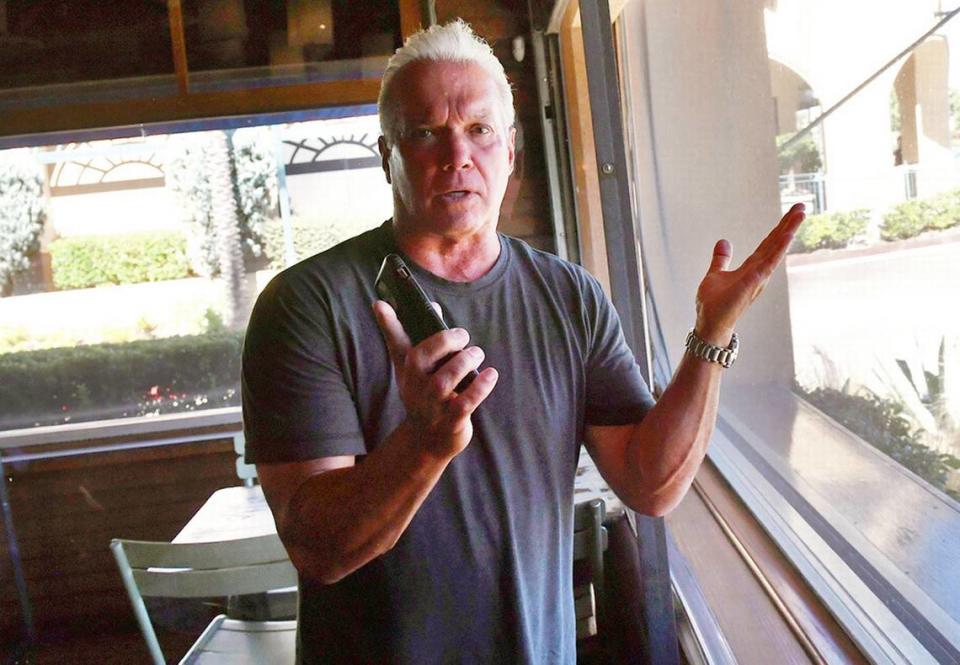Request by owner of Pismo’s restaurant shows Fresno’s real housing challenge | Opinion
- Oops!Something went wrong.Please try again later.
Over the next two years, Fresno needs to add 15,000 new and converted affordable housing units to deal with the acute need in the city for residences at that price level.
That is the estimate given by Mayor Jerry Dyer in his One Fresno Fiscal Year 2023-25 Housing Strategy.
Dyer calls developing new housing his top priority. He is not alone in seeing new housing for all income levels as critical to the city’s future. The City Council members routinely agree the housing crisis is real here, as it is statewide.
Yet a recent council decision involving a small parcel of land shows how prioritizing housing remains challenging for elected officials, even in a place like Fresno, which is more development friendly than California’s coastal cities.
The matter in question was a request by David Fansler to rezone the 1.7-acre parcel he owns located at West Nees and North San Pablo avenues in northwest Fresno.

The land is next to where Fansler operates his Pismo’s Coastal Grill restaurant in the Villaggio shopping center at Blackstone and Nees.
Opinion
Under the city’s General Plan, the master guide to development, the parcel was zoned for high-density residential, meaning 30 to 45 units per acre.
In 2019, prior to the COVID-19 pandemic, Fansler proposed relocating his popular restaurant to the property.
To do that, he needed to get council approval for rezoning the parcel to mixed use, a classification that allows for a combination of residential, retail or commercial development.
At its Jan. 19 meeting, the council approved the rezoning request, but on a 5-2 vote, with Councilmembers Miguel Arias and Nelson Esparza voting no. While city staff analyzed Fansler’s rezoning as maintaining the housing expectation that the parcel had under the General Plan, he is not required to put housing on the Nees property under the rezoning.
If he comes forward with a different proposal, say a restaurant and offices, Fansler will simply be required to identify where housing could go elsewhere in Fresno. Just where that would be is an open question, and was one of the reasons Arias cited in voting against the rezoning.
Arias represents Fresno’s southern and western neighborhoods. “My constituents continually complain about upzoning for higher density in the southern part of the city and downzoning density in the northern part of the city,” he said.
Jobs or housing
Councilmember Mike Karbassi, whose District 2 includes the Fansler parcel, said he supported the rezoning because it not only had the promise of generating property taxes but also sales taxes, as well as creating new jobs, if businesses opened there.
Karbassi counseled his colleagues that they need not worry about state opposition to the rezoning. “The attorney general is not going to sue us for this small parcel.”
That may be. But the rezoning is unfortunate for several reasons:
▪ It undoes what had been carefully thought out in the General Plan. That effort, undertaken when Ashley Swearengin was mayor, put an emphasis on in-fill development, which this parcel reflected. To loosen the requirement now undermines the General Plan.
▪ There is no guarantee of where Fansler might find a site for housing if it is not the Nees property. New housing could be in northwest Fresno, but it may also be southeast or southwest Fresno, as Arias fears. The Nees Avenue land is good for housing as it is adjacent to public transit and near the job center of businesses on Blackstone.
▪ Karbassi’s desire for job-producing uses of the parcel is understandable. But by advocating for the rezoning, Karbassi effectively pushed off housing to an uncertain future.
Sure thing to uncertainty
Multifamily housing of the kind that was intended on the Nees parcel is badly needed in Fresno. As of 2019, 46% of Fresno’s housing was owner occupied, meaning single-family homes. Rentals make up the remainder.
Yet Fresno has seen some of the highest rental increases in the nation in recent years. Dyer’s One Fresno study said rent is affordable to only one in three tenants in the city. Increasing supply is one way to make rents come down.
To be sure, the Nees property would have added less than 100 new units to Fresno’s rental stock.
But the symbolism of the council’s vote is striking.
If developing a range of housing is truly the top priority of city leaders, the council must make it so in the tough decisions on individual projects, like the Fansler parcel. Instead, it took a sure thing — property already zoned for high-density housing — and retreated into a rezoning at a businessman’s request, with no idea of where required homes might someday be built. That is not going to get it done.

